
The Other Palace: Stefan Kalmár in conversation with Bill McAlister
Commanding a 13 year tenure, Bill McAlister steered the Institute of Contemporary Arts through the Thatcher years. Here he meets the Institute’s bright new firebrand Stefan Kalmár for the first time, recounting his experience – and giving Kalmár his blessing.

Installation view of Seth Price Circa 1981 at Institute of Contemporary Arts London. Photo Mark Blower
Founded in 1946 by Geoffrey Grigson, Roland Penrose, Herbert Read, Peter Gregory, E.L.T. Mesens and Peter Watson, the Institute of Living Arts – as it was known before morphing into the Institute of Contemporary Arts – resisted an initial impulse to become a Museum of Modern Art for London, preferring instead to position itself at the forefront of contemporary art and culture. Such is its influence, a myriad of kindred – albeit unconnected – ICA globally have spawned since, from the likes of PS1 New York to the Institute of Contemporary Art in Boston, to Garage and VAC Foundation Moscow or Tai Kwun, Hong Kong or most recently ICA Miami.
Utilising a hired space at Oxford Street’s Academy Cinema, the ICA subsequently took up residence at 17–18 Dover Street in 1950, before moving to The Mall in 1968. (Trivia: the Mayfair site was taken over by Comme des Garçons for the original Dover Street Market in 2004. Apt since Rei Kawakubo is art’s favourite fashion designer).
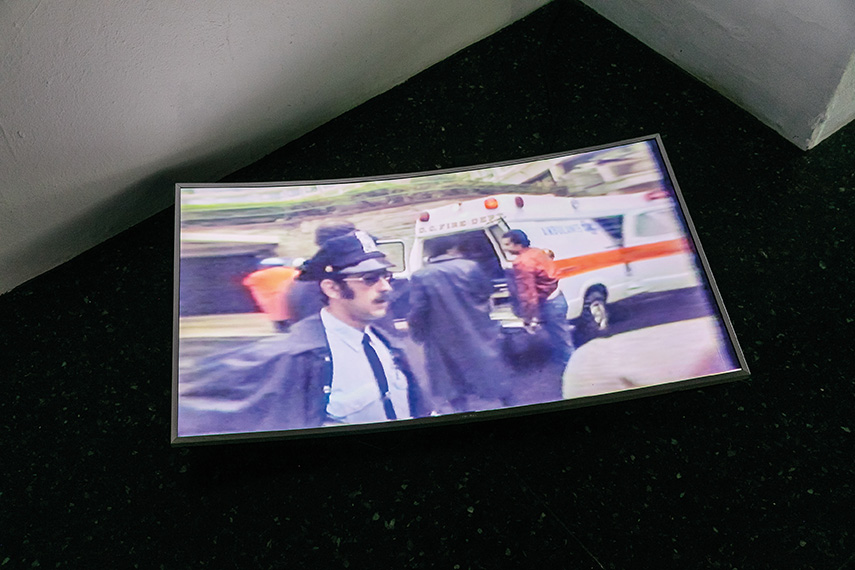
Seth Price, COPYRIGHT SETH PRICE (2006), installation view at Institute of Contemporary Arts, London. Courtesy the artist. Photo Mark Blower
Known for its groundbreaking exhibitions (‘Growth and Form’, 1951; ‘Parallel of Art And Life’, 1953); its associations with Richard Hamilton and Eduardo Paolozzi, and architects like Buckminster Fuller, the ICA flourished throughout the 1950s, steadfastly at the cutting edge. It became increasingly synonymous with live performance and talks – where else in London could you hear W. H. Auden in conversation with Marianne Faithfull? And events with Laurie Anderson, Einstürzende Neubauten and Jan Fabre (‘Power of Theatrical Madness’). The ICA held early shows by Robert Mapplethorpe, Gerhard Richter, Luc Tuymans and Steve McQueen. Whilst the Sex Pistols legendarily first performed at Saint Martins, the ICA is credited with putting on The Clash in 1976, Madness and David Bowie in the ’80s.
Considered to have overseen one of the ICA’s most vital periods, Bill McAlister is the centre’s seventh (and longest-reigning) director, arriving in 1977, the year of the Silver Jubilee, before departing in 1990. Stefan Kalmár, the ICA’s 12th and current director arrived in January 2017, after seven years at New York’s lauded Artist’s Space. Already praised for his approach, his impact will truly be cemented over the coming years.
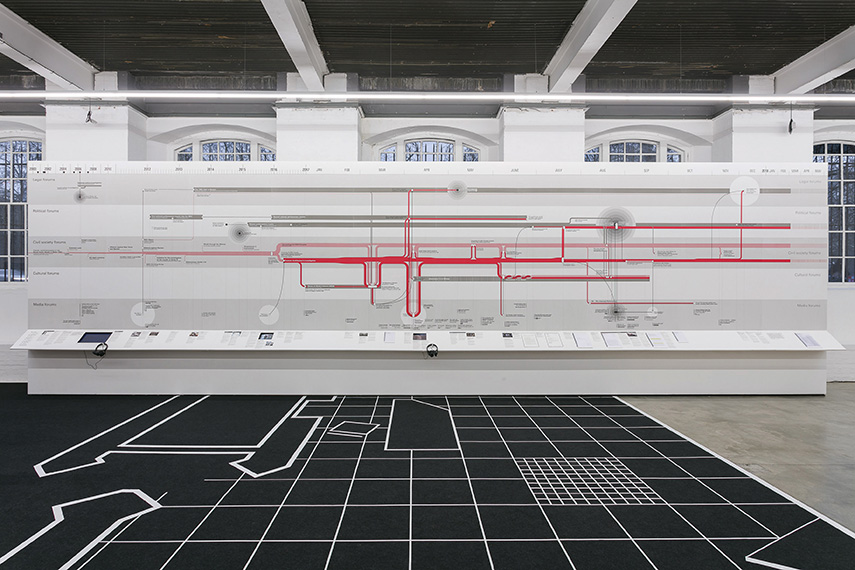
Installation view of Counter Investigations: Forensic Architecture, 2018. Photo Mark Blower
Bill McAlister: We should acknowledge that we’re breaking new ground – old and new directors speaking to each other! I reached out to all of the past directors and none reached back.
Stefan Kalmár: That’s very funny, because when I started in New York, it was the first thing I did – I wanted to meet Helene Winer who had run Artists Space for many years before she opened her own commercial gallery Metro Pictures. Helene and Janell have put on exhibitions by Michael Asher, Cindy Sherman, Louise Lawler, Richard Prince – you know, now iconic exhibitions, and she was like you, ‘It’s funny, no one ever asked me before.’
BM: So well done you for allowing me to come and talk to you. Obviously you don’t feel threatened – or maybe they knew something that we don’t know about meeting past directors.
SK: I believe the past can help to inform the present.
BM: Agreed. And who can argue with the wise man who founded the Arts Council, John Maynard Keynes, who said: ‘A study of the history of opinion is a necessary preliminary to the emancipation of the mind’.
SK: It can’t answer the demands of the present – but it can inform our thinking about the present.
BM: I think one of the qualities we might share is being an outsider. In the sense that you’ve come from a different culture – directly from New York. I felt a real outsider when I came here too. The headlines in Art Monthly were, ‘Who is this man who has come to cleanse the Augean Stables?’
SK: I’m certainly an outsider in the sense that I’m the first non-British director of the ICA. So a first in 70 years, it still seems strange that not once has a foreigner directed this organisation before me.
BM: When they took me on they thought I was foreign, because I grew up in Canada. Upon arrival at the ICA I went to pay my respects to the Crown Commissioners, who own all of this property – and they just happened to be neighbours. Upon meeting the Chief Crown Commissioner Lord Perth, he said, ‘Well I suppose I should welcome you, but you shouldn’t really be in that building.’ And when I said, ‘Why?’ he said, ‘Because it was intended to be the Battle of Britain Museum.’ I told him, ‘Well, my father was a spitfire pilot killed in the Battle of Britain.’ He looked shocked and somehow I felt I was a little less of an ‘outsider’.
SK: Wasn’t it Jane Drew who convinced them differently?
BM: Yes, Jane played a big part in preparing the building as the architect and clearly her skills and forthright determination played a major part in launching the project. However I don’t think she convinced the Crown Commissioners. The credit for that is likely to reside with Jenny Lee, Minister of the Arts, and Lord Goodman, Chairman of the Arts Council.
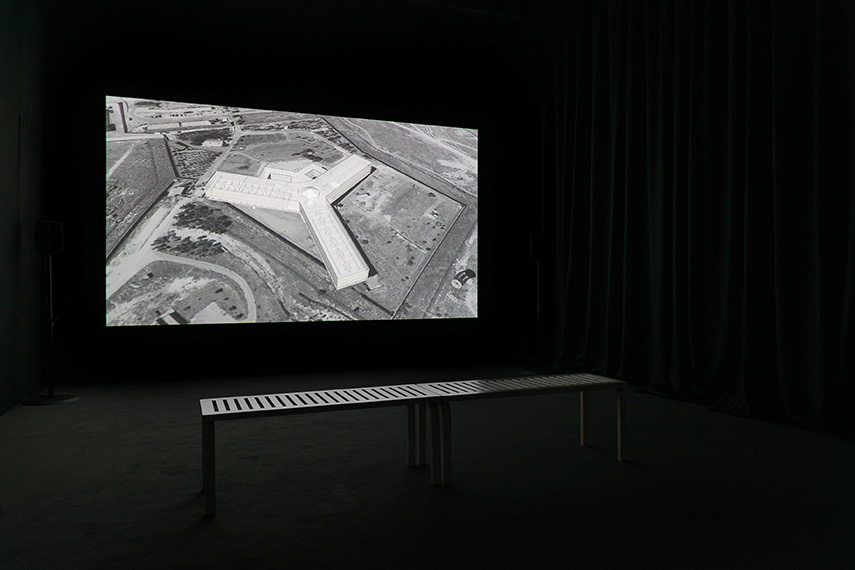
Installation view of Counter Investigations: Forensic Architecture, 2018. Photo Mark Blower
SK: Jane Drew, the architect of our building here on The Mall, was an eminent figure in British Modernism. Not many people know that she made the master plan for Chandigarh, to which she invited Le Corbusier but, as so often, the man got all the credit.
The historical condition that the ICA stands for, of being in this unique geographical location, between Buckingham Palace, 10 Downing Street and Piccadilly, upholding a certain ideal of progressiveness in contemporary culture – not just art – seems today like an antagonism. But it really isn’t, because this is what makes a civic society; that there is a value and a central place for organisations like the ICA – and probably similar to the years you were serving at the ICA – the Thatcher years.
BM: Ah yes, the Thatcher years. The ICA’s location is wonderfully incongruous. The passing public, often on the way to visit Buckingham Palace or to attend functions such as the Trooping of the Colour, were surprised to discover our front door open. They wondered how it could be possible to enter such a grand building without security guards at the entrance. The Crown never liked our placing hoardings to indicate what took place in the ICA, so the passing public were very tentative about entering.
SK: Tell me, what did you do back then, in terms of live art for example? Because when I started here, live art was literally dead. We recently commissioned Dean Blunt with Mica Levi, and KLEIN, and later this summer Richard Maxwell, to produce new performances. For me the ‘s’ in contemporary arts is very important, because the strongest years of the ICA were always when the different art forms were held in equilibrium to each other, always advocating for the most progressive work in all mediums.
BM: The theatre was thriving with performances in drama, dance and music. The outstanding independent theatre companies were Joint Stock, Lumiere & Son, Théâtre de Complicité and visiting foreign companies like Robert Lepage, Jan Fabre, La Fura dels Baus, made the ICA their London home. Performance festivals like Dance Umbrella, London Mime Festival, London International Theatre Festival, ICA Rock Weeks, Monthly MusICA programme of contemporary classical. The ICA theatre was alive and never boring. The Arts Council sometimes hinted the visual arts needed a more contemplative space than the sometimes raucous ICA.
SK: Which is funny because even Roland Penrose and Herbert Read, two of the four founding members of the ICA, advocated early on for this being a multi-disciplinary organisation. And it was pretty much founded in response, or opposition, to the museum of modern art – it wanted to be an institute, not a museum; it wanted to be contemporary, not modern; and wanted to be about arts, not just art.
Don’t you think part of this job is to push the envelope? I always think it’s such a contradiction in terms – if your “business” is risk taking – how can it ever be safe?
As an organisation, if you thrive to be truly innovative and to lead the conversation, looking at visitor figures won’t help you because innovation is often not valued in the moment of its happening. We should all ask ourselves how we ended up in such a culturally homogeneous situation, how “diversity” and “inclusion” can be translated into real institutional policy, something that is lived, not just exhibited or tolerated and not just an Arts Council policy. We need to address how our economical set up might have forced us over the past decade to neglect the very same constituency that we were set up to serve – what does “public” really mean to us today?
BM: The Sun in particular and news editors generally delighted in mocking and ridiculing the ICA. For some time the ICA was not adept at handling the media. Before my time, Genesis P-Orridge had an exhibition called COUM Transmissions and the press went to town. The repercussions were profound – sponsors departed and institutions like the British Council took fright. One of the first things I did was hire a woman called Sandy Broughton, who was magic – not only was she good at all the technical aspects of press work but she had the confidence of every journalist in London. She was a wonderful woman. For about 10 years she protected us from press outrages. She was an essential ingredient in our team.
SK: When risk taking is your mission, then you need an organisational model that advances risk taking. Like a laboratory – if you’re a scientist, you need the support that advances the study of “things”, of new ideas and this is tied up in us being an institute, rather than a museum. Yet we still have half a million visitors a year who participate in this laboratory of ideas.
How do you see the landscape in London has changed over the past 40 years?
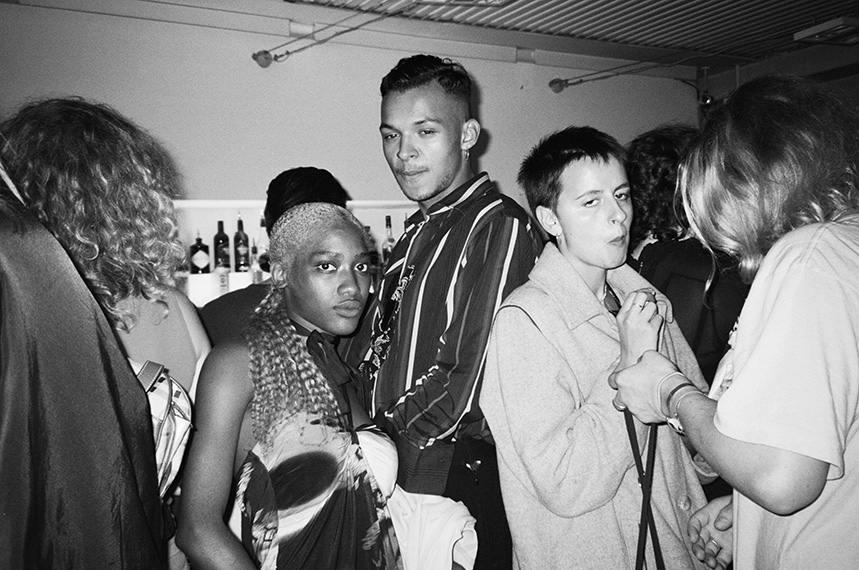
Party goers at Stewart Uoo’s It’s Get Better V, photo by Christian Cassiel, 2017
BM: In ’68, momentous things happened in Chicago, in Paris, Prague, in Berlin, everywhere, but in London there was perhaps a more muted response. Yes, [there were] Vietnam demos, Indica happenings, the Beatles and popular cultural explosions. The birth of Time Out was important. Time Out changed things for organisations like ours because it provided free listings. So you could organise a talk upstairs with a Bulgarian philosopher who few had ever heard of, and you could have a full house, because there were 100 people in London who knew about Julia Kristeva, and they found the listing in Time Out. We couldn’t afford to pay for Evening Standard advertising. Time Out changed everything.
Margaret Thatcher’s arrival in ’79 was dispiriting for the arts but she was too busy with fiscal matters, union regulation and wars to find time to do much damage. The other great change in the cultural landscape since 1968 has been the introduction of the lottery. Lottery funds transformed the buildings of a number of Cultural Institutions. The Roundhouse, Somerset House, the Tate Modern all benefitted hugely from the lottery in the nineties. Unfortunately whilst Tate Modern succeeded in collaring hundreds of millions from foundations and government, the ICA was left with an empty bowl. The ICA building has not been renovated properly since Jane Drew first poured concrete everywhere in 1968.
SK: If you transfer that to a contemporary condition, we now have an ex-editor from Vice magazine working with us who knows his social media. Even I don’t fully understand any longer how cultural communication functions these days, it often seems like some form of wizard magic, how does social media interact with the real and with itself? But, essentially, access and the availability of tools is much greater and often cheaper than in your times, so Twitter or Instagram are today’s Time Out.
BM: I think I was the first director who had a really good team. They held me up, and I held them up, and our weekly meetings were a good part of what made it happen. I enjoyed those weekly meetings. They were instructive but they also gave us a sense of solidarity; taking on difficult challenges was made easier because we were a good team.
SK: How many people were working here back then?
BM: I think it’s about 75, something like that.
SK: That’s similar to today.
BM: I like hearing you talk with enthusiasm about interaction between different art forms and encouraging collaborations. That is always difficult to achieve but very worthwhile. We were never as successful at this as I would have wished. Sometimes a subject demanded integrated efforts and we found ways to make it happen. I recall Sandy Nairne bringing a team together to examine the work and thinking of William Morris and its relevance to today. It was a very worthwhile project.
I worked with an army of collaborators on a huge festival, maybe the biggest ever attempted in London: ‘The Sense of Ireland’. We occupied a large number of London institutions from the Royal Court to The Albert Hall, from The Photographers’ Gallery to Somerset House, from the South Bank Centre to the Roundhouse and colleges, and bringing together more than 3,000 artists from Ireland. It was breathtaking in scale and in effort but the excitement of this public audit and critical examination of Irish culture was valuable. I sometimes think it presaged the Good Friday Agreement.
SK: Look at [spring 2018 exhibition] Forensic Architecture, is this architecture? Is this art? Is it urbanism? Is it documentary? Is it journalism? What is it? Eyal Weizman said, in an interview he did with the Evening Standard, ‘If you want to see art, go to Tate…’ Which made me blush and laugh at the same time.
For me the ICA is always about that moment when you don’t know the status of something. Is it film? Is it performance? Is it experimental cinema? Is it a play? Is it theatre? Is it a musical? Is it any good? What we try to do is to be more fluid, more embracing, open minded towards what the future might need. This also translates to the future architecture of the building, it needs to be even more open, more fluent. But also in terms of the “departments”, we encourage to speak with each other as collectives, rather than everybody defending their status quo. Because only when you speak across disciplines is when you challenge your own narrow thinking and advance each other. Historically the ICA has always been more interested in the hybrid and a fluid notion of things, as the new often appears to us in the gaze of something that is a hybrid between the familiar and the unknown, the strange. It also opens the conversation to other artforms, before it solidifies again into a tangible definition. So our job is to resist the temptation (and pressures) that demand for solidification, for clear definition, as this would mean we also become static.
You go to the ICA because whatever is on, it will be challenging you, challenging your own prejudices; you go home with something that inspires, or irritates or even annoys you. At the ICA you do not just go to the cinema, or an exhibition or a play, you go to the ICA – because you participate in a conversation. We are the canary in the mine; we indicate what’s coming next… if the air becomes too toxic.
BM: Lots of things happened here first. Who do you think the ICA is for?
SK: For artists – as well for all those that look at culture’s progressive potential, how we build relationships in and to the world we live in, and to each other – an audience that is not afraid of the new and that not only tolerates but embraces difference.
The ICA however demands engagement to a degree and level of participation, it’s not consumption, so therefore already it’s demanding. I mean you’re part of the conversation, you’re not just looking at something…
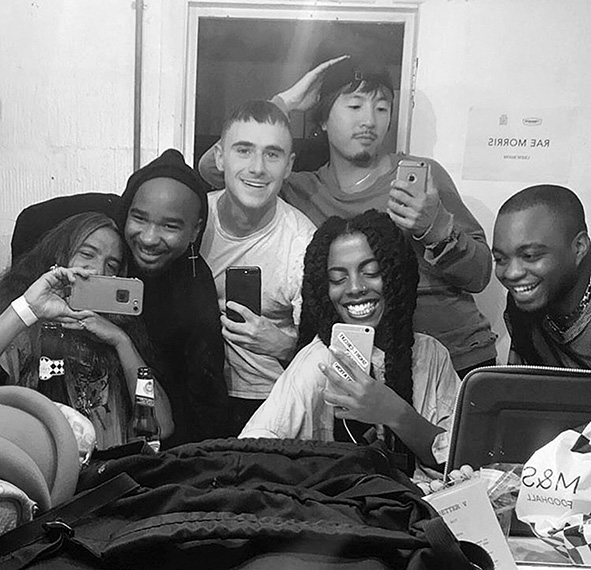
Participating artists and friend at Stewart Uoo’s It’s Get Better V, from left to right: Raúl de Nieves, Jacol by Satterwite, friend, Stewart Uoo, Juliana Huxtable and Just Dosha.
BM: I’ve been describing you as a thinker, when I talk to people, I always say, ‘Thank goodness, we have got a thinker at the ICA.’ A pragmatic thinker with no illusions.
SK: I find it interesting that you’re so harsh on yourself, and yet your years were also the most successful years of the ICA.
BM: Maybe I should catalogue our failings. One major personal failure: I wanted the building that mirrors ours on the other side of the steps leading down from the statue of the Duke of York – which sadly is used as a car park. I wanted the new building to be the Museum of the Contemporary, whilst the old building would be the Contemporary Laboratory. The Museum would provide the context for all that was presented in the Laboratory.
The Museum would be didactic – original work would not be necessary. We would trace the history of what was happening in contemporary painting, performance, music and photography, all the disciplines. For school parties, and tourists who were new to new work, they would be made welcome, to try, so as to understand what’s happening in the contemporary world. We should remember that the first exhibition the ICA mounted was called, ‘40,000 years of Modern Art’, because the curators and the staff in the building were overwhelmed with keeping up with the ‘now’. I found it difficult to get them to take an interest in the past. I ran out of time and there was no sight of lottery money available.
SK: The ICA can be quick, like a speedboat, it thrives on risk, it’s like it has adrenaline rushing through its veins. That’s literally physically exciting. Nobody could have told us, for example, that Forensic Architecture would be such an audience and media success – but more so it never crossed our minds when thinking about our programme; for the director and curators here, to be free of that kind of thinking and pressure is very liberating. And it’s even more liberating if this is understood, recognised and shared by others.
What are you proud of? Your legacy lives on here.

Mary Maggic, Post-Cyber Live Programme, Molecular Queering Agency, 2017 Photo Mark Blower
BM: I’m proud of the achievements of the staff, I’m proud of the artists that have thrived at the ICA – and I remember all of them. But I think I should have been better at persuading the government and the Arts Council to support contemporary arts in practice, in education and presentation/performance.
We did extend our influence beyond the gallery walls, mounting projects in public spaces. Today the Artangel team, who were key players at the ICA, have carried this work forward with great flair and imagination. We did embrace new media and ICA videos have circled the creative world. We supported the sustained campaign to bring Channel 4 into existence which gave opportunities to independent film-makers for the first time.
The ICA always was receptive to art forms outside our borders or heritage and helped build alliances with foreign artists and their social conditions.
I well remember the day Lisa Appignanesi came into my office saying, ‘We have work to do.’ The Ayatollah Khomeini had just issued a fatwa ordering Muslims to kill Salman Rushdie. The ICA became the base for galvanising his defence.
We mounted artists support for the Jazz Section of the Musicians Union in Prague, for Solidarność in Poland.
I don’t wish to curry sympathy but life as Director of ICA is just as torrid as being a football manager and I hope Stefan lasts as long as Arsène Wenger. I hope he is always supported by a wise but critical board and staff who are committed team players.


